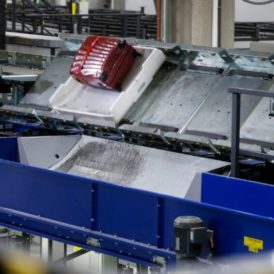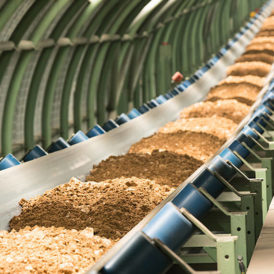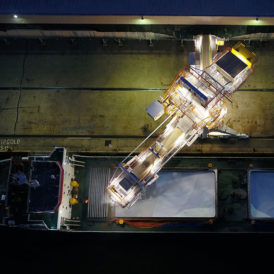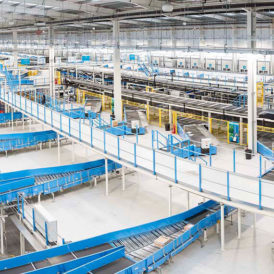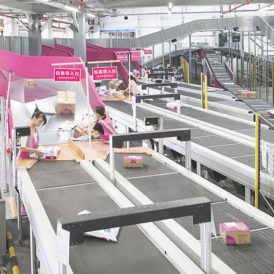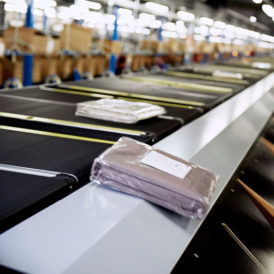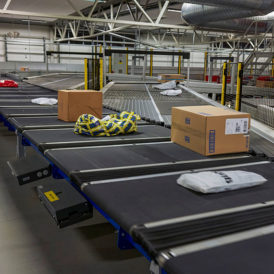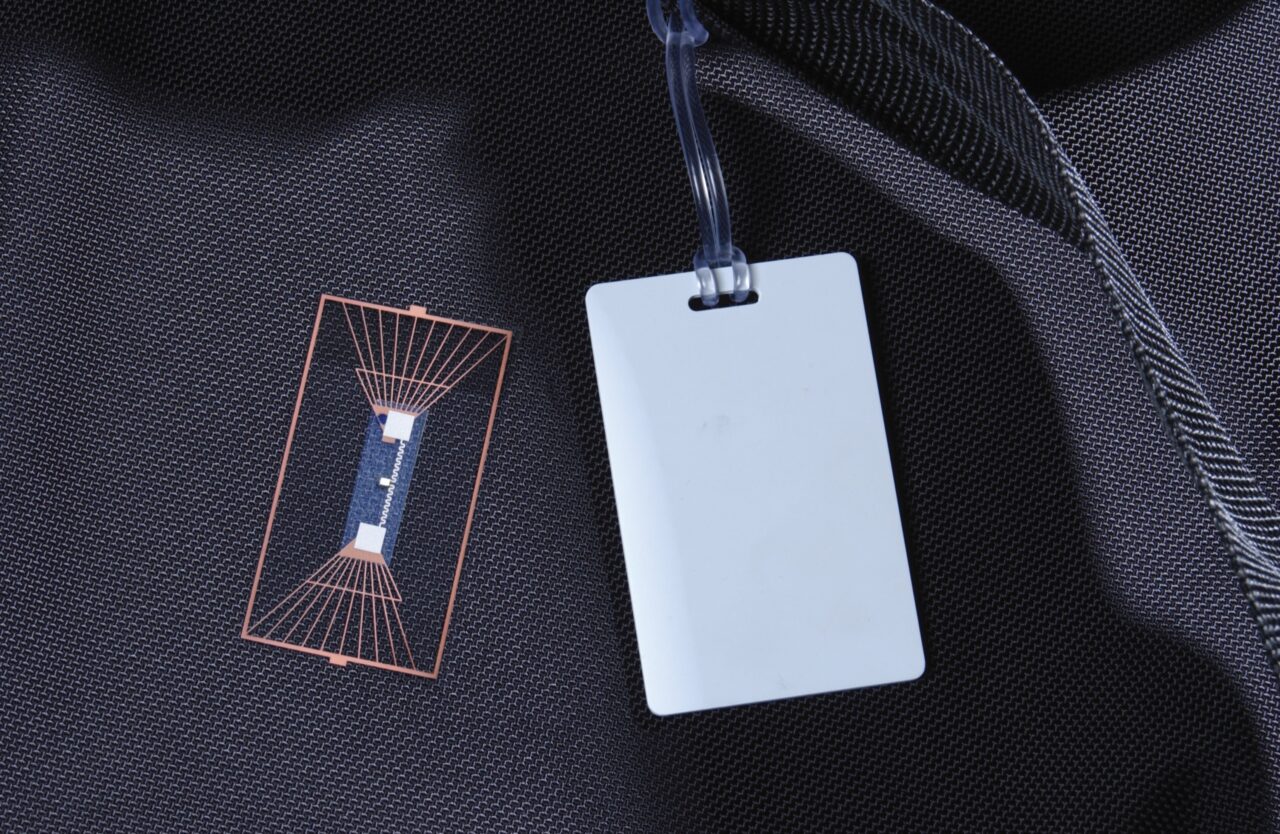You might imagine that two recently bought bags from the same shop could look identical. However, tests carried out on a national Olympic team, which all used the same luggage, demonstrated each team member’s bags could be identified with a certainty rate of 95 to 98 percent.
It proved the cloud-based, AI-powered technology works, and many airports and airlines are excited by the possibility of one day losing the tags and using the tech to identify passengers’ bags, as it promises to increase efficiency, reduce manual interventions and offer a more sustainable alternative.
The widespread use of biometric IDs could usher in a completely paperless and digital BHS future. So how do they work and what can they offer airports?
A passenger’s ID: all contained in a photo
Biometric IDs offer the industry an alternative way to access the relevant information concerning passengers, their baggage and their journey.
Currently such an ID is retrievable from the barcode on the baggage tag and comes in the form of what the industry likes to call the ‘10-digit licence plate’.
Instead, a photo or photos taken during check-in, possibly supplemented by additional photos taken during security and sortation, will enable airlines and airports to access the passenger’s data.
The photo serves as the bag’s unique ID – a means of identification used through security, sortation, loading, unloading and stopovers if necessary.
The technology is still under development – feasibly up to 12 photos could be taken, from angles ranging from zero to 270 degrees, to capture five of the six sides of the bag, thus enabling a recreation in 3D – but once perfected it could help prevent the printing of 4 billion tags a year.
Solution to reduce unsustainable paper usage and mishandled baggage numbers
The 4 billion figure is an estimate based on the 3.42 billion passenger journeys made in 2022. It’s a figure projected to increase even more in 2024 and possibly even exceed the record 4.54 billion journeys made in 2019.
With more journeys come more instances of mishandled baggage. In 2022, there were 7.6 for every 1,000 bags (broken down, 80 percent were delayed, 7 percent lost and 13 percent damaged) – a 74.7 percent increase on 2021 in which there were considerably fewer passenger journeys.
International flights, particularly those involving transfers, are especially vulnerable to mishandled baggage issues (19.3 per 1,000, compared to 2.4 for domestic flights).
Some 42 percent of all cases of mishandled baggage are experienced during transfers, while a further 19 percent are bag ID-related.
Digitalising the whole luggage experience, contend industry experts, would reduce the number of mishandled bags.
Logical step towards digitalising the passenger experience
Dispensing of tags would be another step towards entirely digitalising the passenger experience.
At many airports already, passengers can check in their luggage by themselves, dispatching their bags onto a series of conveyor belts that will take it through security and sortation.
By 2025, 96 percent of airlines and 72 percent of airports want their passengers to use touchless, unassisted bag drops.
Furthermore, some 67 percent of airlines want to offer their passengers real-time baggage status – triple the number of those who do today.
Even loading and unloading are becoming increasingly automated thanks to the use of autonomous mobile robots, meaning passengers could potentially soon be the only humans to handle their luggage across the entire journey.
The tag, which is printed during check-in and then discarded as waste, is the only blemish on a chain of custody started and ended by the passenger that would otherwise be entirely sustainable and digital.
What else do biometric IDs bring to the table?
Biometric IDs present a sizeable number of other pros to consider:
- Tags are prone to being damaged and unreadable – or even lost. They might become completely sodden when exposed outdoors, for example
- Biometric IDs lend themselves to pre-boarding luggage checks – extra peace of mind that no rogue bags have made their way onto the plane, or that any bags are missing
- The use of cloud technology ensures there are no issues with onsite software or the need for trained personnel to sort out IT problems
- Biometric IDs could serve as a ‘before travel’ photo to prove damage was sustained during transit in case there is an insurance claim: a benefit for honest passengers, airlines and insurers
- Biometric IDs could potentially in the future enable passengers to use their phones to more easily identify their own luggage when picking it up from the carousel
- In cases when luggage needs to be removed from a plane at the last minute (because passengers failed to make it onboard), biometric IDs can be used by staff to quickly locate and remove the bags. Otherwise, it is a question of checking lots of tags
Not ready today: fine tuning required!
However, bags with biometric IDs could be just as hard to detect in the hold of the plane as bags with tags.
Until a handheld device is made available, which airline staff personnel could use to detect the bag based on its image, a lot of manual checking is required.
While the photos offer a unique identification, how obvious will it be to under-pressure airline personnel trying to locate a bag for removal so a flight can leave in adherence with baggage reconciliation rules?
On wide-body flights, luggage is loaded in containers, so it might be more difficult to locate bags with biometric IDs, but on narrow-body flights the luggage tends to be loaded loosely in layers – making it easier to locate a bag with just a visual description.
Nevertheless, photo tech used on mobile phones is constantly evolving, so some sort of tool is likely to emerge.
There are also quite a few other cons to consider:
- All airports will need to use the tech to make the system work efficiently on a global basis. Implementation will need a huge commitment and could take a long time to orchestrate
- Airports without the tech simply won’t be able to identify tagless bags – a potential logistical nightmare for remote airports co-ordinating stopovers, and an increased security risk
- Cloud software could increase the risk of hackers claiming ownership of passenger data and could cause other security problems
- Staff won’t be able to check the biometric IDs if there’s a power outage or if the database crashes – and there is currently no fall-back process if this happens
- Biometric IDs require well-lit, shadow-free, transparency-free, high-resolution images to function – will the camera tech be up to the task?
Biometric IDs will be hard to detect if they become visually-impaired in adverse weather conditions
